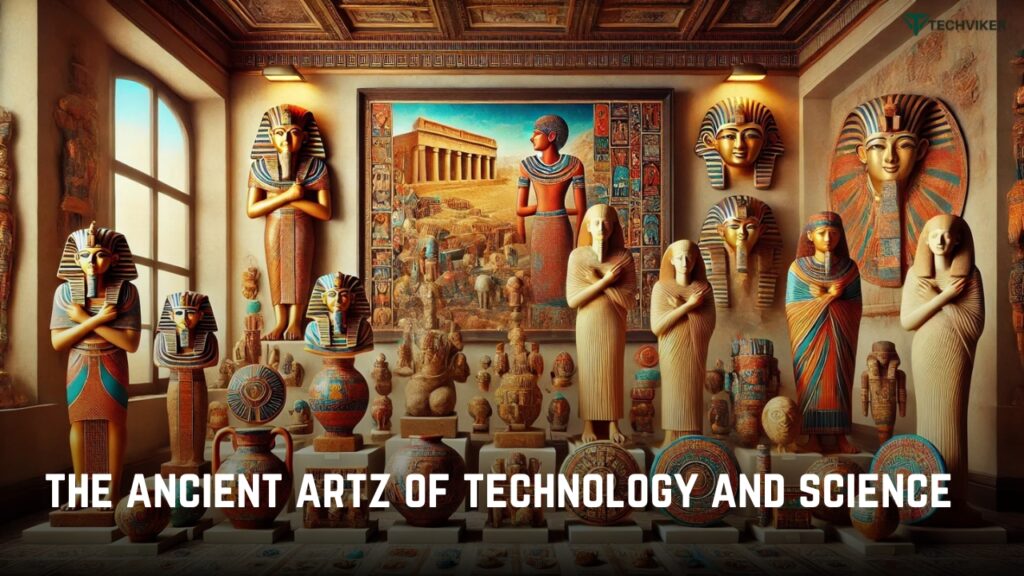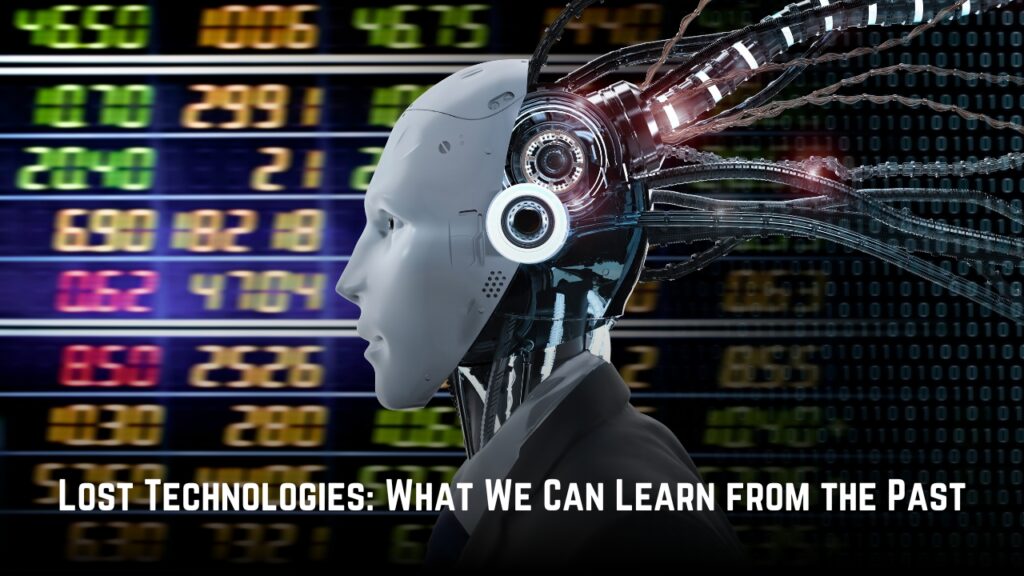The Ancient Artz of Technology and Science

The speed at which the world of technology changes is unprecedented; Artificial Intelligence is on the very crest of this revolution. The kind of “evolution” happening with these machines that can learn, think, and even “evolve” is changing everything from health care to financial sectors, and entertainment education. And here we stand on the brink of this technological frontier; it’s worthwhile to reflect on the “Ancient Artz” of this technology. While we typically consider AI and other technologies developed recently, their roots are based on ideas and philosophies dating back thousands of years. There are hidden clues within the ancient artz of the practices, wisdom, and technologies from early civilizations that might help enlighten us in our present-day technological evolution, especially in AI and machine learning.
Ancient Knowledge and the Seeds of Artificial Intelligence
The concept of artificial intelligence—machines that mimic human thinking—is modern, but the notion of creating intelligent, thinking entities dates back to antiquity. Many ancient civilizations had ideas or myths that resemble our understanding of AI and automation today.
Ancient Greek mythology was portrayed with the ability to create life or consciousness through inanimate material by figures such as Hephaestus, who was the god of invention and craftsmanship. He was said to have created automata or self-operating machines that could serve the gods. The ancient Greek myth of Talos is one of the earliest stories about a machine with consciousness and autonomy; he was a bronze giant who protected the island of Crete. Although they were myths, these tales set in motion the imagination of generations to come and hinted at the possibility of creating machines that could think and act on their own.
Much more concrete than mythology was the work of early philosophers, mathematicians, and engineers. The principles they laid down would later find their place in AI. Aristotle of ancient Greece, for example, established early ideas about logic and reasoning that paved the way for later developments in the creation of AI algorithms. His “syllogistic logic” is considered one of the earliest precursors to the formal systems used in contemporary computer science logic. Meanwhile, the concept of machine-automated thought processes was foreshadowed by the works of medieval scholars as they inquired into the mechanical nature of the mind.
These early ideas, built upon ancient knowledge, would eventually find form in modern science as artificial intelligence. Ancient civilizations had no technology to engineer machines that could think, yet their intellectual explorations showed the world a pathway toward discoveries.
Primitive tools and technology lay the foundation for future technologies
Although they didn’t have silicon chips or neural networks as we do today, the ancient world was hardly technologically inventive. The tools that early cultures came up with were the primitive ones and, in many ways, the precursors to modern computational thinking and machine design.
For example, early tools such as the abacus-a simple, yet mighty device for computation-do bear a striking resemblance to the foundational concepts of computing machines. Developed in Sumer about 2300 BCE, the abacus allowed ancient peoples to perform complex arithmetic tasks, much as early computers helped perform calculations. This tool represents one of the earliest attempts to automate human thought-counting and computing that would later evolve into the high-powered AI systems we use today.
The clock is another early tool that may seem a long way from AI but is connected to the development of AI: the mechanical clocks of medieval Europe were primarily a time-keeping device but helped open up the possibility of automating machines-were of such a high degree of precision and cyclical that they provided early analogs for system loops and algorithms, hallmarks of most contemporary AI models.
Ancient cultures were deeply involved in the study of mathematics, geometry, and astronomy—fields that are closely related to the development of AI algorithms. The ancient Egyptians, for instance, showed early understandings of geometry in building the pyramids with remarkable precision. This early emphasis on computational thinking, using basic principles of math and measurement, would set the stage for the algorithmic approaches that drive AI today.
Lost Technologies: What We Can Learn from the Past

Studying the ancient artz of technology is indeed very interesting, especially when discussing lost technologies. Lost technologies are advanced technologies dating back to ancient times that have been lost or forgotten over history. According to some researchers, there may lie key insights to some modern technological challenges, including AI solutions, in them.
For example, the arcane artz of producing “Greek fire”-the incendiary arsenal of the Byzantine Empire-is believed to have been involved with a complex chemical process that was, subsequently, lost in time. Likewise, the Roman technique of making incredibly durable “concrete,” a material that would inspire the term itself, remains unknown to today’s scientists. Researchers are currently attempting to replicate this ancient technology because it could change modern construction practices and open up sustainable solutions for our ever-growing urban environments.
Even though these lost technologies aren’t directly related to AI, they establish that the ancient world was far more technologically advanced than we realize. They also fit into a key principle that’s still viable for today’s AI development: knowledge is always cyclical and has to be rediscovered and refined over time. Perhaps some of the principles that once guided the creation of intelligent machines in ancient cultures have been forgotten, and AI might offer us the opportunity to rediscover these lost pathways.
Artificial Intelligence and the Philosophy of the Mind
It is at this boundary between ancient wisdom and modern AI that one finds themselves pondering what it would mean to “think” or to “be intelligent.” In the world of yore, thinkers such as Plato and Aristotle were stuck with questions about the nature of the mind consciousness, and intelligence. Plato’s “Allegory of the Cave,” for example, touched on matters about perception, knowledge, and reality—which are highly pressing questions for AI today.
We are presented with a similar philosophical challenge: Can machines truly “think”? Do they possess consciousness, or are they simply simulating thought processes? The ancient debates about the nature of mind, intelligence, and perception offer valuable insights into the kinds of philosophical questions that continue to surround AI research.
For instance, in the words of Aristotle, a famous example comes in the form of the “unmoved mover,” an entity that starts motion but itself remains unmoved. Much like this notion, modern AI speaks of autonomous machines, while machines that learn and grow through adaptation based on data input come to resemble this old concept of the original force of intelligence, before being controlled in so direct a manner.
The Future of AI: Lessons from the Ancient Artz

As we look forward to the potential future of artificial intelligence, we can learn much from the ancient artz of technology. The ancient world’s focus on logic and reasoning led people to investigate the possibilities of automation that established an intellectual framework for the AI of today. Although ancient cultures did not build intelligent machines as we perceive them today, they were born out of the same intellectual curiosity and desire to make sense of this world in pursuit of which the current AI research is undertaken.
And so it comes to pass, that as AI progresses in the years that lie ahead, much of its development is not merely based on technological innovation but by rediscovering principles and ideas that may go back thousands of years. Ancient philosophical questions about intelligence, automation, and the nature of the mind are as relevant in today’s thoughts and designs on AI as they were in antiquity.
By going back to the ancient artz of technology, it may be that we come out with some of the most epochal concepts that have recently surfaced in the modern AI age—concepts that were once regarded as lost but await rediscover as we move along in pushing further limits of what machines can do.
Conclusion
The ancient artz of technology and science, particularly in the realms of artificial intelligence, offers a fascinating lens through which to explore the evolution of human thought and technological advancement. The ancients themselves would not have had the tools to create the AI systems we know today; however, many of their philosophical, mathematical, and engineering achievements prepared the groundwork for much of our modern technological landscape. By understanding the connections between ancient wisdom and modern innovation, we can better appreciate the profound legacy of human ingenuity and the potential future of AI.
